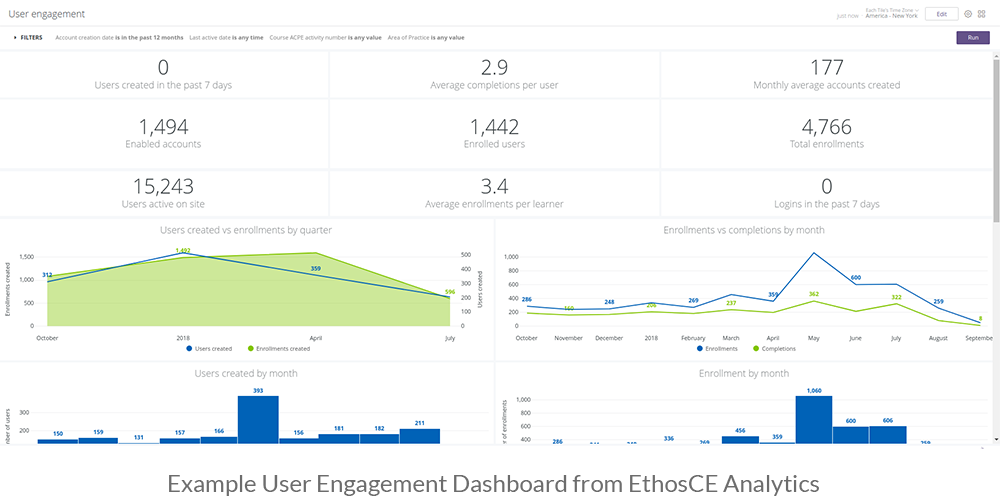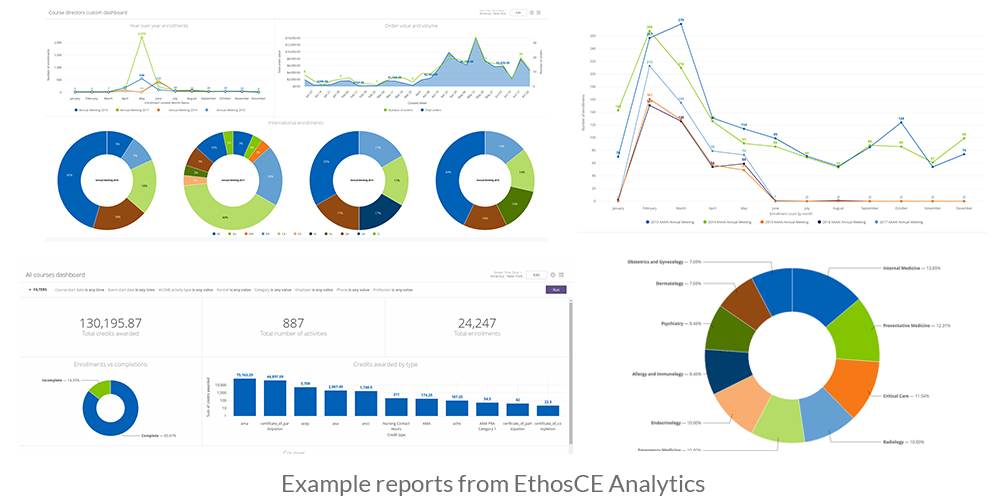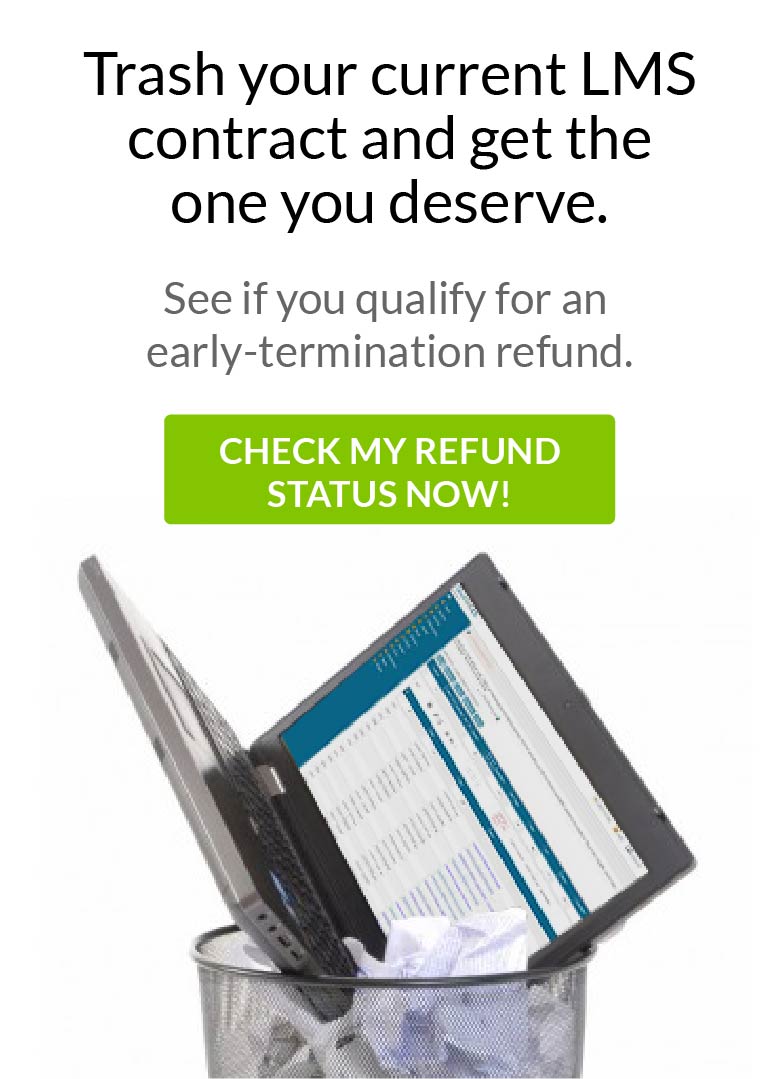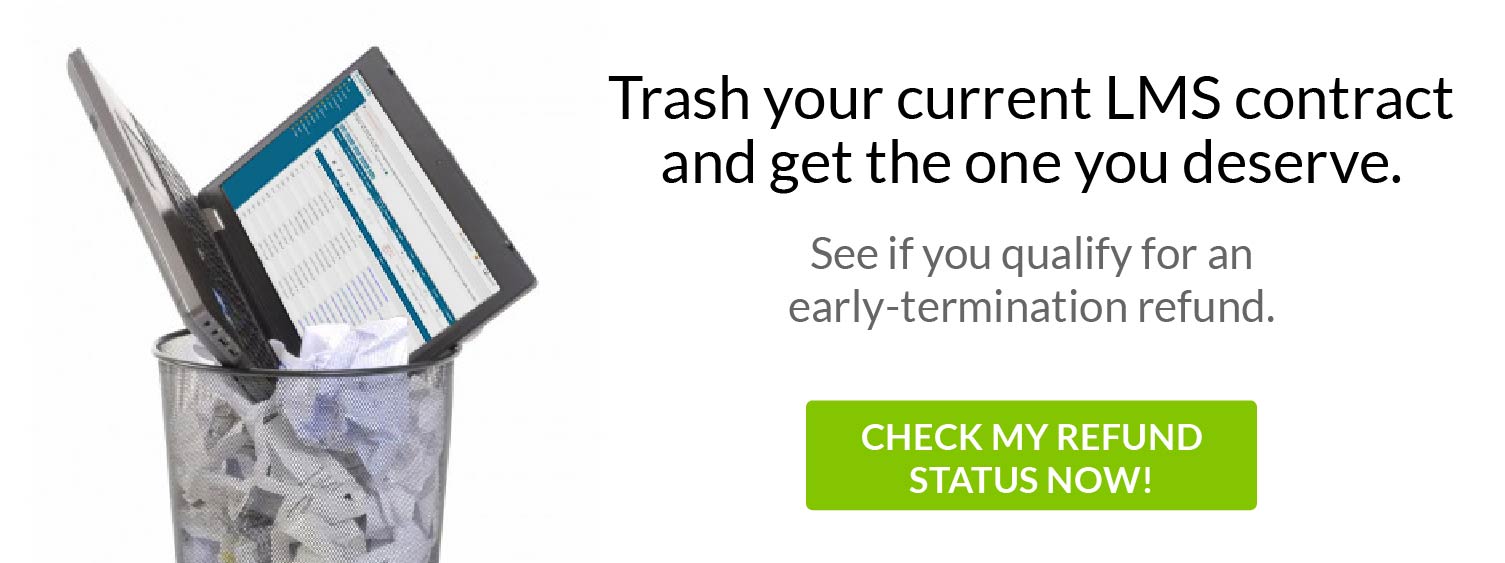Integrating Your CE Data Systems Shouldn’t Be Hard
You don’t really have a choice: you need quick access to all of your CME program data—from student registration to LMS support ticket requests—to make informed management decisions and effectively lead your team. That’s why integrating your CE data systems shouldn’t be hard when you’re using your LMS. It’s likely that relevant program data is interconnected with information from multiple sources, and that data is essential to your everyday decision-making. As a CME director focused on sustainable program growth, you can’t afford to miss critical insights because your LMS has limited data management features. If you are using an LMS to manage CME programming, easy access to essential insights is a right, not a nice-to-have extra feature.
Why Your Data Matters So Much
Your course and student data are much more than a record of your program’s activity: it’s a blueprint for your future success. With accurate course data, you don’t have to play detective or rely on guesswork when it comes to assessing your program’s strengths and weaknesses. You can the root causes of poor student performance or low course completion rates and create a curriculum strategy that stops the outflow of unhappy students and attracts eager new learners.
For your data to provide the rich insights that you need, however, it has to be comprehensive—inclusive of historical and real-time information from multiple sections of your program. That’s why integrating your CE data systems should be effortless: it’s the only way to create an accurate portrait of how well your program is supporting your students’ educational needs.
Which Data Should Be Top-of-Mind?
As a CME director, you’ll have no shortage of potential sources for data relevant to your decision-making processes—from third-party research reports to member feedback to learner assessment performance records. One of your biggest challenges is determining which data is essential for your existing workflow. While your requirements will change along with the needs of your learners over time, some datasets will maintain relevance at every stage of your CME program’s growth. Here are just a few:
- Historical and real-time student assessment scores for individual courses and globally within the program
- Learners’ self-identified knowledge and competency gaps before and after course completion
- Historical course completion rate data segmented according to students’ years of professional experience, education, and demographic details
- Learner feedback on LMS usability over time
- Course-by-course and global improvements in educational outcomes over time
In addition to the above data, you may also want to look at external factors that could impact your learners’ educational choices and interests. These might include:
- Changes in a relevant accrediting organization’s CME credit requirements for medical professionals. Your students may require a broader range of course offerings and more credit hours than your program currently offers.
- New best practices standards presented by leading professional organizations. You may have to update the presentation of your curriculum and activities content to reflect changes in industry standards. Learn how to design your LMS the way you want.
- Current events impacting community demand for a specific medical skillset. As social shifts and current events influence community needs, you may have to adjust your educational approach.
- A rise in popularity of new healthcare technologies which may have a steep learning curve for medical professionals. With new technologies come new imperatives for technical competencies for medical professionals: be certain that your CME program can provide the high-demand content that your audience seeks.
- Recent research showing a shift in emphasis among leading health systems regarding a specific approach to healthcare. Be aware of changes in the way leading healthcare providers, professional organizations, and thought leaders are discussing national healthcare benchmarks. A paradigm shift in community healthcare thinking may also require a change in the themes covered in your marketing content.
You may also have a significant amount of data from your organization that has not been entered into your LMS but which may be relevant to your CME program’s development. This may include, for example, an influx of new members with specific educational needs that you may wish to take into account when developing your curriculum, or a record of members who have expressed interest in a particular topic as a CME course.
You might choose to keep some of this external data on a spreadsheet or a simple text file, but to keep up-to-date and manage data effectively as your program scales you need to be able to integrate all of your data systems easily.
At EthosCE, we believe that as a CME director, your data is your Swiss Army knife—it’s a tool that should be readily available and simple to put to use.
That’s why we make integrating your CE data from diverse sources easy. Our customizable data dashboards allow you a 360-degree view of all of your organization’s critical data. From course completion rates to learner assessment scoring patterns, you can slice historical and real-time data as needed and view all of your selected datasets at a glance from the Admin dashboard.

Don’t let the above list intimidate: if you’re using an enterprise-grade LMS like EthosCE, then your program data will be accessible from your Admin dashboard. You can also easily create customized reports and generate data visualizations from external data. Want to show how a change in CME credit requirements for a specific segment of your audience helped boost course registrations? With EthosCE you can enter data and generate visualizations with a few clicks. Need to put it all together in a report? You’ll save hours of design time with our customizable reports that allow you to integrate our advanced data visualizations into a data-rich, easy-to-read template.
EthosCE Analytics, which comes bundled with the EthosCE LMS, also has an advanced notifications system that can automatically alert you to real-time changes in the data you select, such as course completion rates or new registrations.
Even with a good idea of which data matters, you still might be wondering if you could just manage your data manually rather than making the leap to an enterprise-grade LMS.
5 Reasons Why You May Want to Stop Wasting Time With Spreadsheets
It’s true: you won’t reimagine a long-term growth strategy every week, and you won’t change your curriculum every month. Do you really need all of that data at your fingertips? Here are five reasons why we believe you can’t afford to move ahead without unlocking the power of your data.
- CME directors need a global portrait of their CME program’s performance.
Aggregated data will present the most comprehensive view of your CME program’s progress. Without it, you’re operating on guesswork. - A fragmented view of a CME program’s successes and failures based on limited data will result in misdirected “diagnostic” policy.
CME programs have many different levels of success and “failure”: it is necessary to view learner outcomes and behaviors on the aggregate and individual level to determine if the policy is on the right track. - Human mistakes during manual information gathering often corrupt data collection and produces inaccurate insights.
EthosCE automates time-intensive data collection processes, thereby limiting human error. - When reports and visualizations can be created from diverse data sources with a few clicks, CME directors can easily create evidence-driven educational content and marketing strategy.
A limited perspective on CME program wins will result in poorly defined academic policy and misdirected marketing efforts. - The EthosCE Analytics suite makes historical and current aggregated course data available for easy comparison through customizable dashboards, providing a complete portrait of CME impact.
The ability to compare learner outcomes in different courses allows CME directors to create more reasonable benchmarks.

What’s in That Report Anyway?
At EthosCE, we believe that beautiful, engaging, reports get read. That’s why we’ve made data visualizations effortless to generate and share and our insight-rich customizable reports so easy to create. With a few clicks, you can drill down within a pool of aggregate course and program data and get the answers that you need to guide your team’s daily decision-making processes. Here are just a few of the types of reports that can be created with our templates system:
- Historical learner engagement levels, filtered by course or topic
- A comparison of at-risk and high achieving learner assessment data over a specific period
- LMS site usage and engagement rates comparisons to similar organizations
- Learner outcomes patterns for specific types of activities content over time
EthosCE Analytics custom reports are also easy to share via URL with role-based viewing permissions throughout your organization. Data can also be exported via Google Drive, Dropbox, and S3. Click here to learn more about EthosCE Analytics reports.
EthosCE Analytics provides a complete portrait of CME program performance, empowering CME directors to use their resources wisely and strategize for success. For more than 16 years, EthosCE has helped organizations of every size streamline their data management processes and transform insights into successful growth strategy.
Tired of data wrangling? Request a 1-on-1 walkthrough with us to see how we can put your data to work for you!
 We're now part of the Cadmium product suite! Learn more
We're now part of the Cadmium product suite! Learn more 

